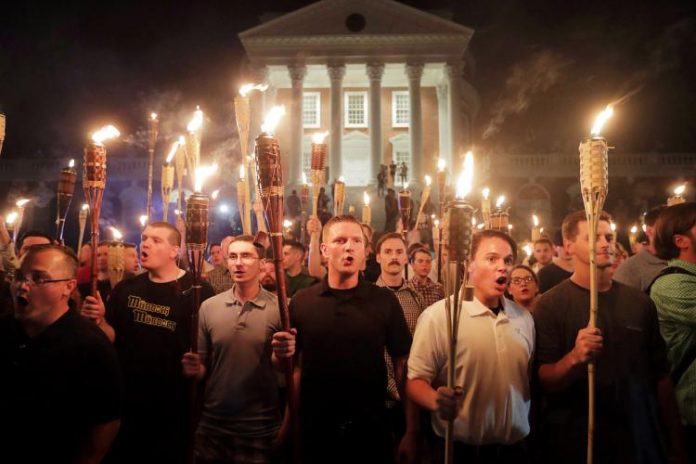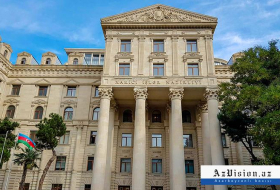Massacres like the Christchurch shootings are not, as some leaders claim, isolated attacks carried out by disturbed individuals. They are part of a broader pattern of far-right terrorism, and they demand a response on par with all other counter-terrorism efforts.
Last week, a far-right extremist killed at least 50 people – including a three-year-old child – worshiping at two mosques in the New Zealand city of Christchurch. Neither white supremacy, nor racially motivated terrorist attacks carried out in its name, are new phenomena. Yet the response to far-right terrorism remains thoroughly insufficient.
After the New Zealand massacre, US President Donald Trump dismissed the threat of white nationalism as a case of “a small group of people” with “a very, very serious problem.” This fits into a broader trend, in which attacks by perpetrators with Muslim backgrounds are immediately classified as “acts of terror” and addressed in a well-resourced and systemic way, while violent attacks perpetrated in the name of other ideologies are treated as an “isolated incident.”
But there is nothing isolated about such incidents. According to the Global Terrorism Index 2018, the death toll from terrorist attacks associated with far-right groups or individuals has been steadily rising since 2014. In the United States, right-wing extremists have carried out far more attacks than Islamists.
The attack in Christchurch was directly inspired by the 2011 far-right terrorist attack in Norway, of which I am one of the few lucky survivors. Indeed, the Christchurch gunman, Brenton Tarrant, claims to have received the blessing of the perpetrator of the Norway attack, Anders Breivik, who killed 77 people that day.
Breivik is far from Tarrant’s only white-supremacist role model. In his rambling “manifesto,” released just before the attack, Tarrant also mentions other far-right extremists – such as Dylann Roof, who killed nine African-Americans in a church in Charleston, South Carolina, in 2015.
All of this goes against the notion that massacres like the Christchurch shootings are cases of disturbed individuals – mentally ill “lone wolves” – carrying out a one-time attack. These attacks are clearly part of a broader pattern, which demands a response on par with all other counter-terrorism efforts.
Such a response must, first and foremost, acknowledge the link between resurgent far-right nationalism and the casual racism and dog-whistle politics that have been creeping back into many societies’ public discourse. My colleagues and I at Extremely Together, a counter-extremism youth-engagement initiative convened by the Kofi Annan Foundation, have been following this trend with growing concern. Several of us know first-hand what it is like to live through terrorist attacks.
We also know that, when Trump warns that immigrants will “infest” the US, he is feeding the narrative that some people are sub-human. That narrative – also taken up by other leaders, such as Brazilian President Jair Bolsonaro – has real-world consequences, including the emboldening of extreme actors. It comes as no surprise that Tarrant praised Trump in his manifesto as “a symbol of renewed white identity and common purpose.”
The response to this intensifying terrorist threat must also reflect the fact that, like Islamist extremism, violent white supremacists are organizing across borders, becoming increasingly closely connected and eager to amplify one another’s messages. To counter this trend, governments and civil-society organizations must work to boost coordination and information-sharing, just as they do in response to Islamist terror.
Media also have a role to play. In order to maximize control over his message of hate and its dissemination, Tarrant live-streamed his attack on Facebook. But many news organizations then posted parts of the video on their own platforms, arguably spreading the perpetrator’s violent message for the sake of clicks.
Rather than make themselves accomplices and amplifiers of terror, news organizations must stick to fact-based reporting that avoids spreading terrorist propaganda. A debate may be needed – and should be welcomed – to help journalists find the right balance, so that they provide comprehensive independent reporting without becoming tools of extremists.
Of course, part of the responsibility also lies with social-media platforms like Facebook. Today’s digital technologies offer an immediate, high-impact channel through which terrorists can reach a global audience, often in real time. Facebook and others must take their share of the responsibility and find ways to prevent their platforms from being used in this manner.
Even as far-right extremism surges, most of the world’s people recognize that there is more that unites us than that divides us. Effective responses to poverty, climate change, epidemics, and much else require cooperation across not just territorial borders, but also racial, ethnic, or religious lines.
For my colleagues and I in Extremely Together, the imperative could not be clearer. We must stand together against all forms of extremism, uniting in opposition to the hateful messages – including from our elected leaders – that embolden terrorists of all stripes.
Bjørn Ihler, an Extremely Together Young Leader at the Kofi Annan Foundation, co-founder of the Khalifa Ihler Institute, and One Young World Ambassador, is an international counter extremism expert, technologist, and activist.
Read the original article on project-syndicate.org.
More about: terror
















































